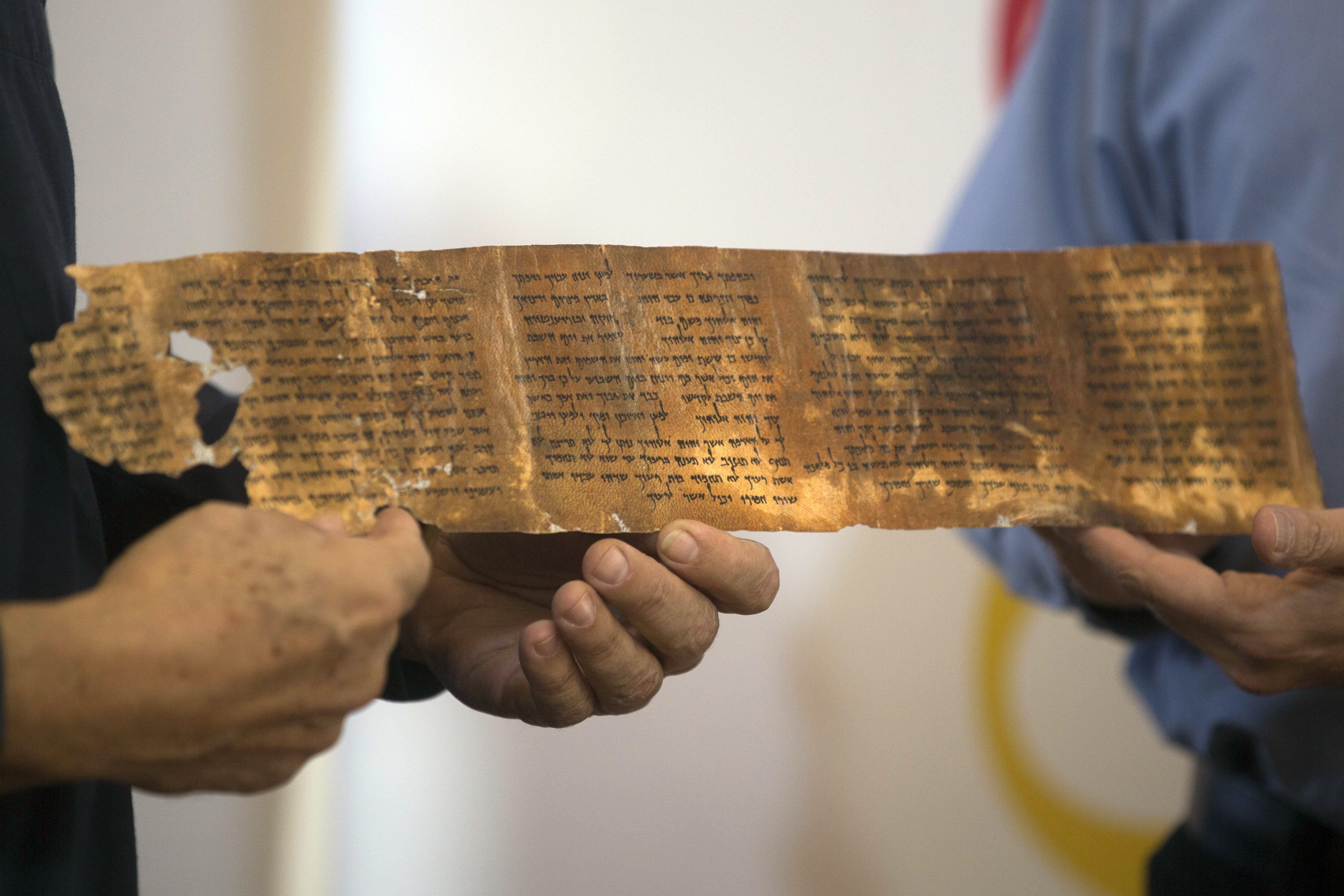21st-century technology could reveal the secrets of the Dead Sea Scrolls
The scrolls are famous for containing the oldest manuscripts of the Hebrew Bible, but exactly who wrote these important documents has been a mystery. Now technology is changing our understanding, writes Peter Phillips

Ever since the Dead Sea Scrolls were accidentally discovered more than 70 years ago in a cave in Qumran, in the Judaean Desert of the West Bank, they have been a source of fascination.
The scrolls are famous for containing the oldest manuscripts of the Hebrew Bible, but exactly who wrote these important documents has been an enduring mystery. Now, thanks to the use of technology, we’re getting closer to understanding some of the background to these enigmatic texts.
In a new study, researchers at the University of Groningen’s Qumran Institute have put together a robust investigation into the palaeography – the study of old handwriting – of one of the scrolls.
Through a series of painstaking processes including digitisation, machine reading and statistical analysis, the team propose that two scribes with very similar handwriting probably wrote the two halves of the manuscript.
The scroll in question, 1QIsaa, is a large manuscript and one of seven found in 1947 near the Dead Sea at Qumran. The 2,000-year-old scroll preserves the 66 chapters of the Hebrew Bible’s Book of Isaiah and predates other Hebrew manuscripts of Isaiah by more than 1,000 years.
The authors trained an algorithm to separate the ink from its background – the leather or the papyrus of the scroll. Then the algorithm studied every character, looking for small changes that might signal a different writer. This kind of algorithmic technology has started to be used in biblical studies, and the wider digital humanities, only in the past few years.
While the use of artificial intelligence in the title of the new study might suggest that computers have taken over the role of the scholars in the northern Netherlands, this is certainly not the case
To some extent, the new paper overturns the argument that the original text was the work of one scribe. At the end of the 27th column of text – out of a total of 54 – researchers found a break in the manuscript, both a gap of three lines and a change in material. A second sheet is stitched onto the first, and at this stage, the authors suggest, the scribe also changed.
This result adds to the general assumption and some previous research that suggested there were perhaps teams of scribes who worked together on the Dead Sea Scrolls, with some working as apprentices to the more senior members.
A different scribe is not the only possible explanation. The authors note that a change of pen, the sharpening of a nib, a change in writing conditions or in the health of the scribe could each contribute to the difference they found. Nevertheless, a change of scribe is the most likely conclusion.
Computers are an increasingly important part of 21st-century text analysis. There are growing numbers of papers at conferences on the Hebrew Bible and the New Testament that explore various aspects of the process of transferring texts into digital artefacts (such as the Codex Sinaiticus project). These include issues relating to how different projects can make use of each other’s data, and the success – or otherwise – of machine learning.
Biblical scholars, including a group of researchers in Switzerland, are using machine learning and stylometry – the study of linguistic style – to determine which new letters were authored by Paul the Apostle, for example.
Others are modelling texts to explore historical themes across the Hebrew Bible. Machine learning is also being used for text mining – where a target text is compared with many other similar texts to find parallel uses of the same words or ideas – to explore variations between different texts. The number of positive results found this way usually far outreaches the number proposed by human commentators.
Read More:
The sheer number of possibilities currently produced by machine learning also exceeds the number of research hours available to researchers trying to determine which are useful for ongoing investigation and which need to be dismissed as chance parallels. At present, machine-learning tools need refinement but they will get there.
While the use of the words “artificial intelligence” in the title of the new study from Groningen might suggest that computers have taken over the role of scholars in the northern Netherlands, this is certainly not the case. However, the shift to digital tools offers a new opening for the study of sacred texts, particularly the Christian scriptures and the Hebrew Bible.
Peter Phillips is a research fellow in digital theology, and Director of the CODEC Research Centre, Durham University. This article first appeared on The Conversation.
Join our commenting forum
Join thought-provoking conversations, follow other Independent readers and see their replies
Comments
Bookmark popover
Removed from bookmarks